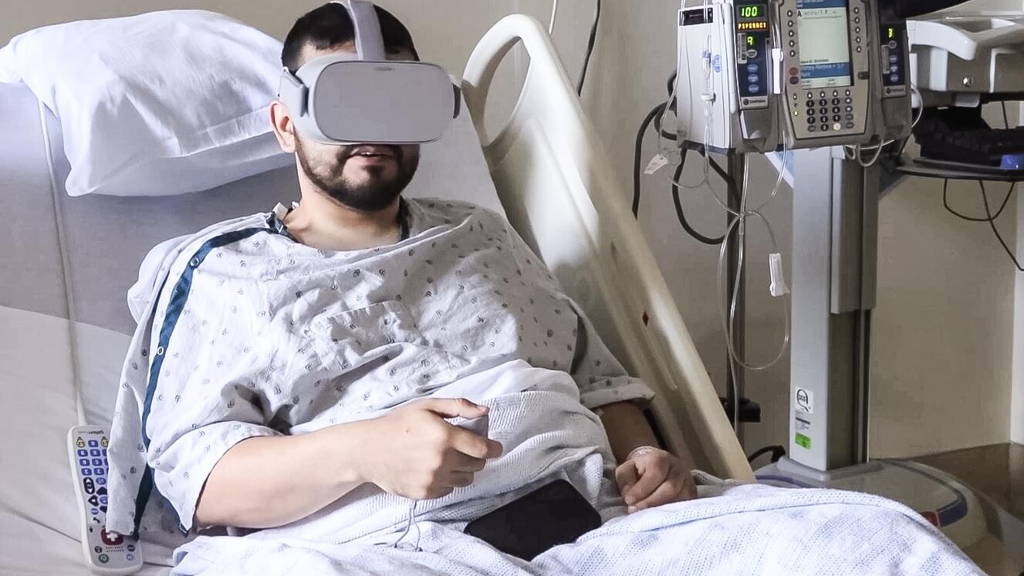To check if VR can be used to reduce severe pain, researchers conducted a randomised comparative-effectiveness trial. The 120 adults in the study were admitted to Cedars-Sinai Medical Center for a variety of ailments including orthopaedic problems, gastrointestinal diseases and cancer. All of the patients had an average pain score of at least three out of 10 during the 24 hours prior to participating in the study.
Half of the patients were given VR goggles with a variety of relaxing and meditative experiences to choose from. They were advised to use the headsets three times a day for 10 minutes per session – and as needed for breakthrough pain – over three days.
The other half of the patients were instructed to tune their in-room TVs to the health and wellness channel, which included guided-relaxation content such as yoga and meditation. They also were asked to view the channel three times a day for 10 minutes per session and as needed for breakthrough pain. Several times a day, nurses asked all the patients in the study to rate their pain using the standard zero to 10 scale.
The study's findings showed the on-demand use of VR resulted in statistically significant improvements in pain compared to the TV group, with patients in the VR group averaging 1.7 points lower on the pain scale. When researchers analysed findings from the subgroup of patients with the most severe baseline pain of seven or above, VR patients averaged three points lower than the TV group.
"This is our largest and most ambitious VR study to date," Spiegel said. "Our results support previous research that VR can meaningfully reduce pain using a non-addictive, drug-free treatment for people experience a range of different pain conditions."
In Spiegel's previous study of short-term VR therapy, completed in 2017, the results published in JMIR Mental Health showed patients using VR reported a 24% drop in pain scores.
Virtual Reality is still underused in pain management
The current study underscores that VR can be an effective tool to add to traditional pain-management protocols.
"Virtual reality is a mind-body treatment that is based in real science," Spiegel said. "It does more than just distract the mind from pain, but also helps to block pain signals from reaching the brain, offering a drug-free supplement to traditional pain management."
Several patients have found VR so helpful in managing pain that they are now using it regularly at home. One patient, Joseph Norris, said he has suffered from chronic pain for 30 years after undergoing radiation treatment to his hip and pelvic area. The former U.S. Air Force lieutenant colonel took pain medication for 20 years until he began searching for alternative methods.
Norris tried VR six months ago, and today he uses his VR headset once a week. Norris said, "VR is a tool I use to successfully divert attention away from my pain, and it helps me reinforce my breathing pattern."
Spiegel and his team are currently involved in a study following patients using VR in their homes for 60 days. "I believe that one day soon VR will be part of every doctor's tool kit for pain management," Spiegel said.
Many studies show that VR absorbs the patient’s attention so that the pain sensations get reduced. It helps patients with chronic pain, children during some unpleasant medical tests, and also women during childbirth.
Source: Cedars-Sinai






